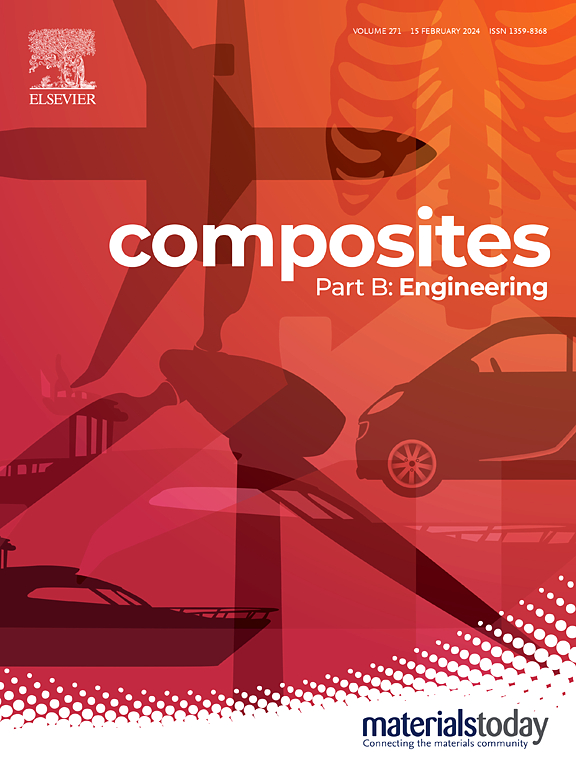Multidimensional twisted mechanical metamaterials with programmable stiffness for adaptive impact protection
IF 12.7
1区 材料科学
Q1 ENGINEERING, MULTIDISCIPLINARY
引用次数: 0
Abstract
Compression-torsion coupling mechanical metamaterials (CTCMMs) transcend classical Cauchy continuum mechanics by incorporating torsional degrees of freedom, unlocking new avenues for dissipation and damping. However, conventional CTCMMs are typically confined to fixed spatial configurations and mechanical properties post-fabrication, limiting their adaptability in dynamic environments. Here, we present a universal strategy for constructing multidimensional chiral CTCMMs—from 2D to 4D—via a modular, discrete assembly approach. Through a combination of experimental validation and theoretical modeling, we reveal how structural dimensionality governs mechanical behavior: Specifically, 2D CTCMMs enable programmable load-bearing capacity and energy absorption via chirality and topological tuning; 3D CTCMMs achieve isotropic cushioning and damping performance; while 4D CTCMMs incorporate temporal functionality, enabling continuous and reversible modulation of stiffness and impact response through thermally induced shape-memory effects. Proof-of-concept demonstrations—including fragile-object landing protection and drone collision mitigation—underscore their potential as lightweight, reusable, and adaptive protective systems. Our work lays the groundwork for the development of next-generation mechanical metamaterials, with broad implications in energy dissipation technologies, protective packaging, and resilient robotic systems.

具有可编程刚度的自适应冲击保护的多维扭曲机械超材料
压缩-扭转耦合机械超材料(ctcmm)通过结合扭转自由度超越了经典柯西连续介质力学,为耗散和阻尼开辟了新的途径。然而,传统的ctcmm通常局限于固定的空间结构和制造后的机械性能,限制了它们在动态环境中的适应性。在这里,我们提出了一种通用的策略来构建多维手性ctcmm -从2D到4d -通过模块化,离散组装方法。通过实验验证和理论建模的结合,我们揭示了结构维度如何控制机械行为:具体而言,二维ctcmm通过手性和拓扑调谐实现可编程的承载能力和能量吸收;三维ctcmm实现各向同性缓冲和阻尼性能;而4D ctcmm则结合了时间功能,通过热诱导的形状记忆效应,实现了连续和可逆的刚度和冲击响应调制。概念验证演示——包括易碎物体着陆保护和无人机碰撞缓解——强调了它们作为轻量级、可重复使用和自适应保护系统的潜力。我们的工作为下一代机械超材料的发展奠定了基础,在能量耗散技术、保护性包装和弹性机器人系统方面具有广泛的意义。
本文章由计算机程序翻译,如有差异,请以英文原文为准。
求助全文
约1分钟内获得全文
求助全文
来源期刊

Composites Part B: Engineering
工程技术-材料科学:复合
CiteScore
24.40
自引率
11.50%
发文量
784
审稿时长
21 days
期刊介绍:
Composites Part B: Engineering is a journal that publishes impactful research of high quality on composite materials. This research is supported by fundamental mechanics and materials science and engineering approaches. The targeted research can cover a wide range of length scales, ranging from nano to micro and meso, and even to the full product and structure level. The journal specifically focuses on engineering applications that involve high performance composites. These applications can range from low volume and high cost to high volume and low cost composite development.
The main goal of the journal is to provide a platform for the prompt publication of original and high quality research. The emphasis is on design, development, modeling, validation, and manufacturing of engineering details and concepts. The journal welcomes both basic research papers and proposals for review articles. Authors are encouraged to address challenges across various application areas. These areas include, but are not limited to, aerospace, automotive, and other surface transportation. The journal also covers energy-related applications, with a focus on renewable energy. Other application areas include infrastructure, off-shore and maritime projects, health care technology, and recreational products.
 求助内容:
求助内容: 应助结果提醒方式:
应助结果提醒方式:


